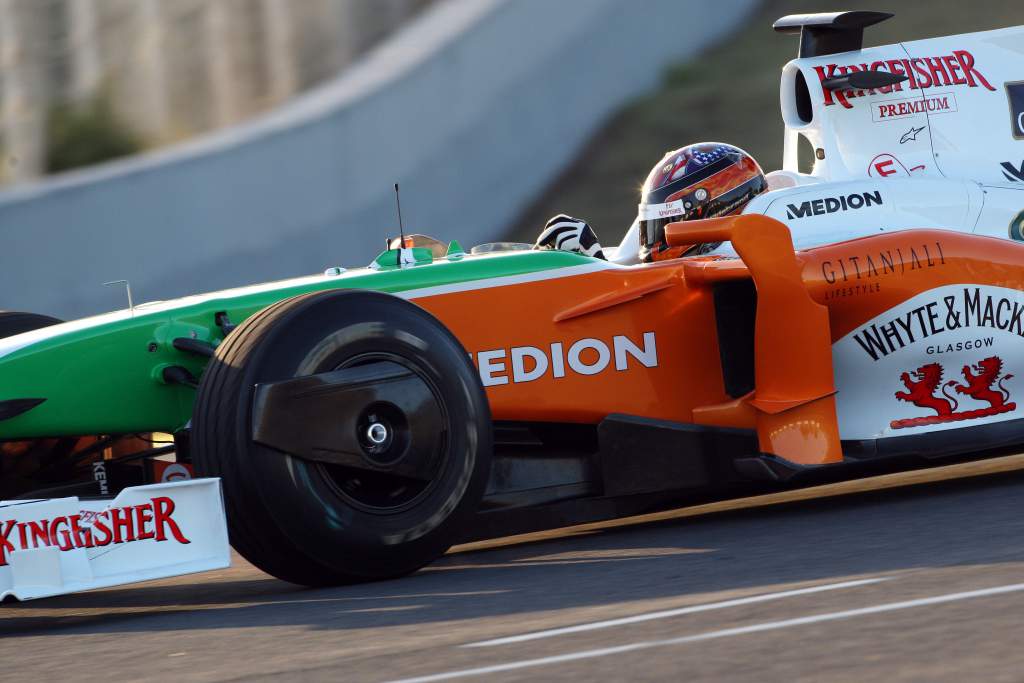Up Next

It would be totally bizarre in this current era, where Formula 1 teams are unlikely to take a punt on a proven IndyCar star, that one would hand a chance to the champion of IndyCar’s feeder series.
But back in 2009, that’s exactly what happened as Indy Lights champion JR Hildebrand belted into a Force India in the November young drivers’ test at Jerez.
Hildebrand had raced in A1GP at Brands Hatch in early 2009 and in the Formula Palmer Audi Autumn Trophy as part of the Team USA Scholarship in 2005, but that was about the sum total of his competitive experience outside of America before a chance encounter set up his test with an F1 team. It’s the kind of story you couldn’t really make up.
“I had actually briefly met Vijay Mallya in 2007 I think,” recalls Hildebrand, now an IndyCar podium finisher, rookie of the year in that Indianapolis 500 in 2011 and now The Race’s IndyCar podcast host.
“I had met him because, interestingly enough, in my hometown of Sausalito, California, he owned the local newspaper, and had a residence there!
“A chunk of his car collection was stowed there in a totally nondescript place that looked like an office building, you’d have no idea it was a garage or there were cars or anything in there.
“I got to know the fellow that looked after all of his cars – Malcolm Page – who himself had some experience in Formula 1, as a mechanic a number of years prior, in the 80s into the early 90s.
“And so a bit of a serendipitous, just random connection. I saw Malcolm often, went down and visited him, he was on my email list, back during a time when I was writing about myself and in the third person!
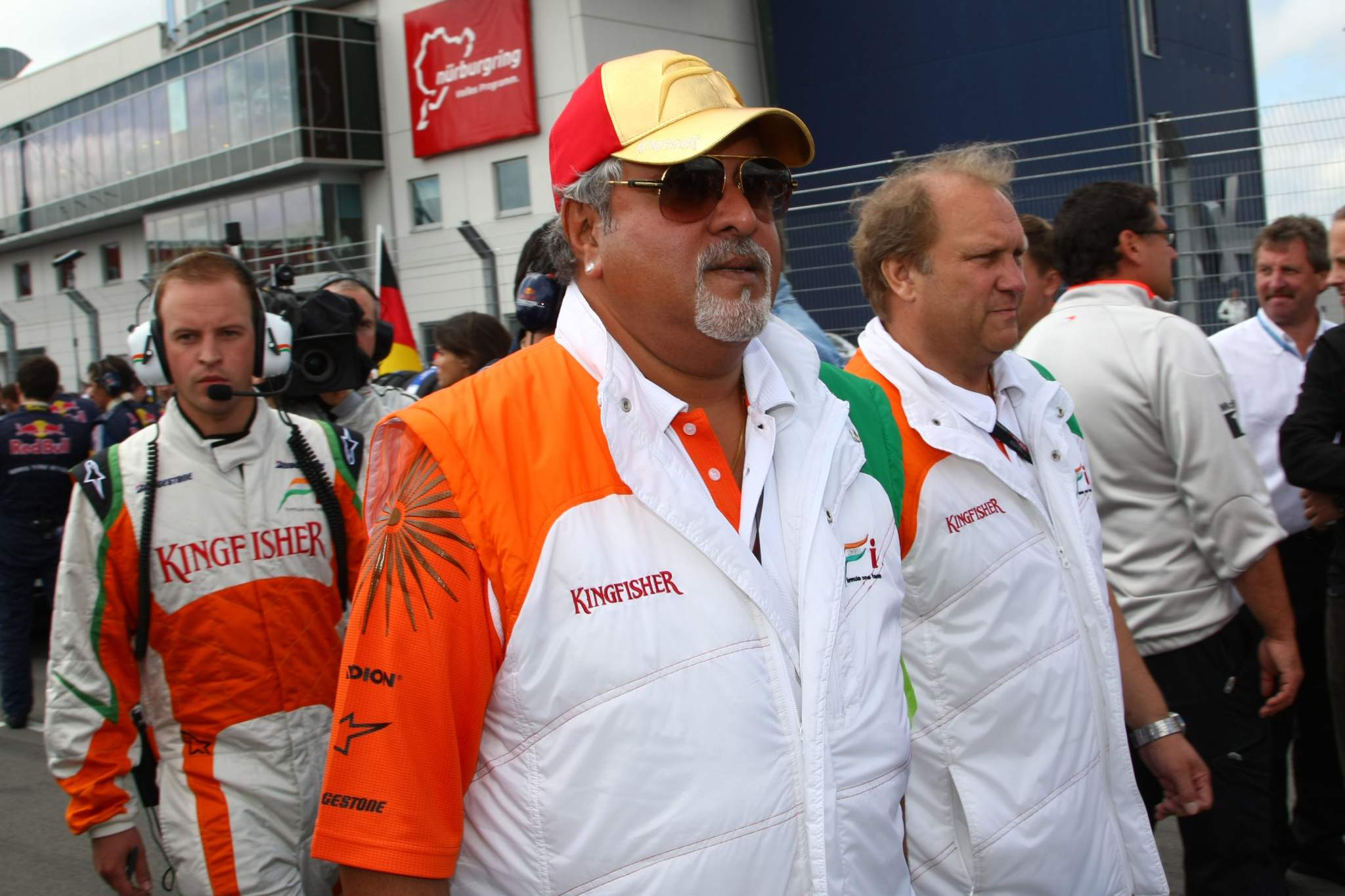
“I think he was really the one that kept the bug in Vijay’s ear, and I imagine Otmar [Szafnauer, Force India COO who went on to be team principal at Racing Point/Aston Martin] being an American, that might have played a bit of a role, and it all basically just came together.”
Hildebrand would have to impress in the simulator against several other drivers unbeknownst to him at the time. Due to Force India’s technical partnership with McLaren, the assessment was held in Woking with Paul di Resta, Karun Chandhok and Neel Jani among those who were assessed.
So, before even getting to the young drivers’ test – then a proper youth-focused event, “you didn’t have Fernando Alonso turning up at 39!”, adds Hildebrand – he’d have to beat some sterling young drivers to it.
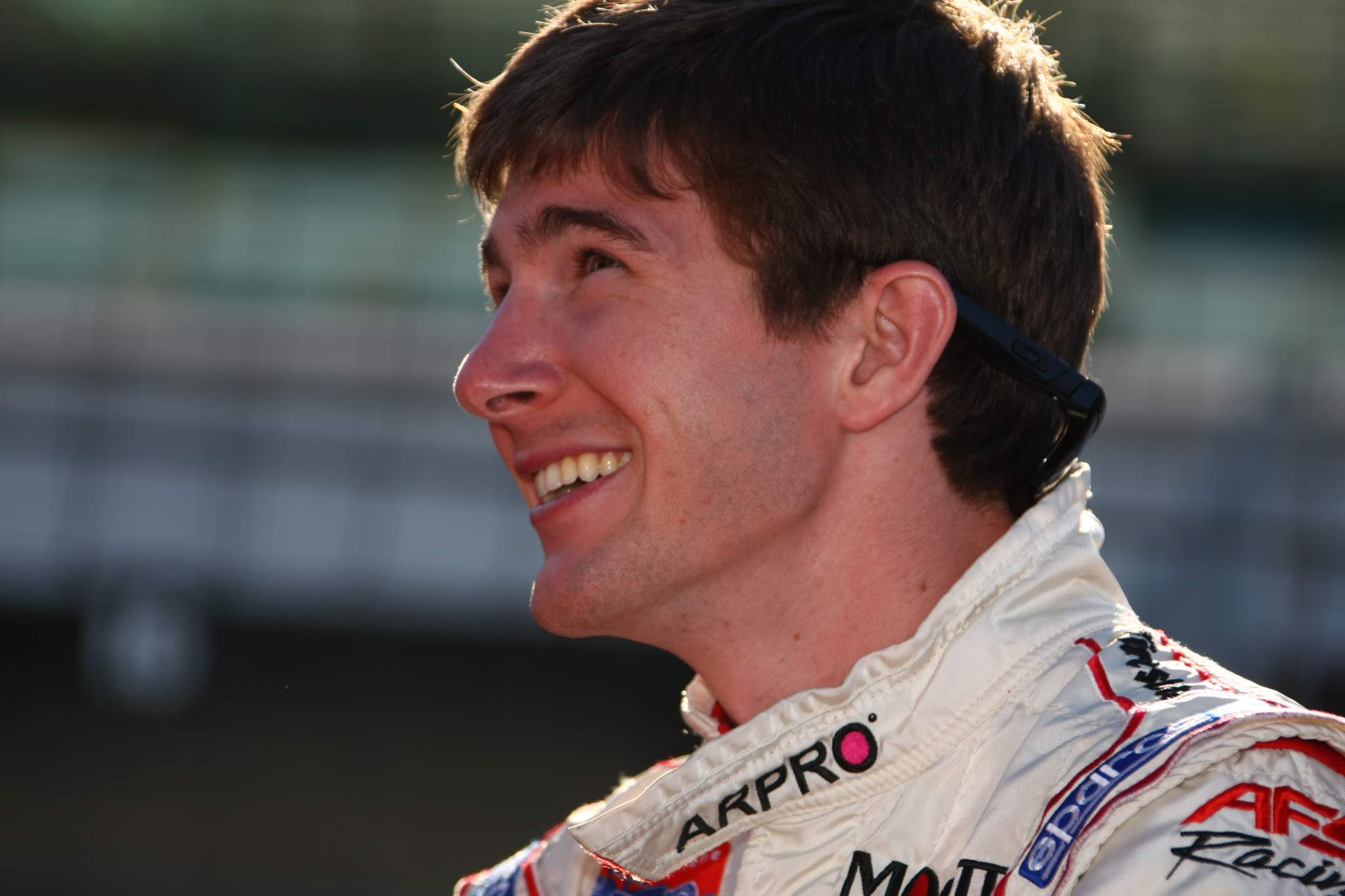
Work in the simulator wasn’t exactly a major part of the preparation in Indy Lights at the time, and to counter that, Hildebrand had to use an IndyCar team’s simulator – “their setup is lousier than what I’ve got in my office right now,” – and that was it. Into a top-line F1 simulator!
This is where Hildebrand peaked in the eyes of Force India. It certainly wasn’t plain sailing but when the time came to it, he impressed with his speed, work ethic and live problem-solving ability. He was also asked what secret changes had been made to the car between runs and how much fuel was onboard too.
“I think one of the days I walked from the hotel, the little bed breakfast that we stayed in, down to the McLaren factory that we all know now and the guard was like, what the fuck are you doing? You just walked here? Who are you? Why are you here?” recalls Hildebrand, who was tasked with lapping Barcelona to get adapted to the sim.
“I had trouble figuring out Barcelona. There were a couple of parts of the track, having never driven in real life, there were some bumps, the way that you had to drive the car through a couple of corners I could just not sort out in the sim that morning.
“So I was a little bit discouraged by that, knowing roughly what the laptime target should have been.
“I was feeling so jet lagged at this point, so I went back to the hotel, took a nap, walked back, got in the sim, now at Jerez, and it just all sort of clicked.
“The track made more sense to me for whatever reason. I’m not sure that I actually had the second-fastest lap outright, but I had the second-fastest rolling lap among the group. Di Resta was the quickest.
“And so, I think, more or less on those grounds they chose the two of us to go to the test so I got a call from Otmar in an airport somewhere.”
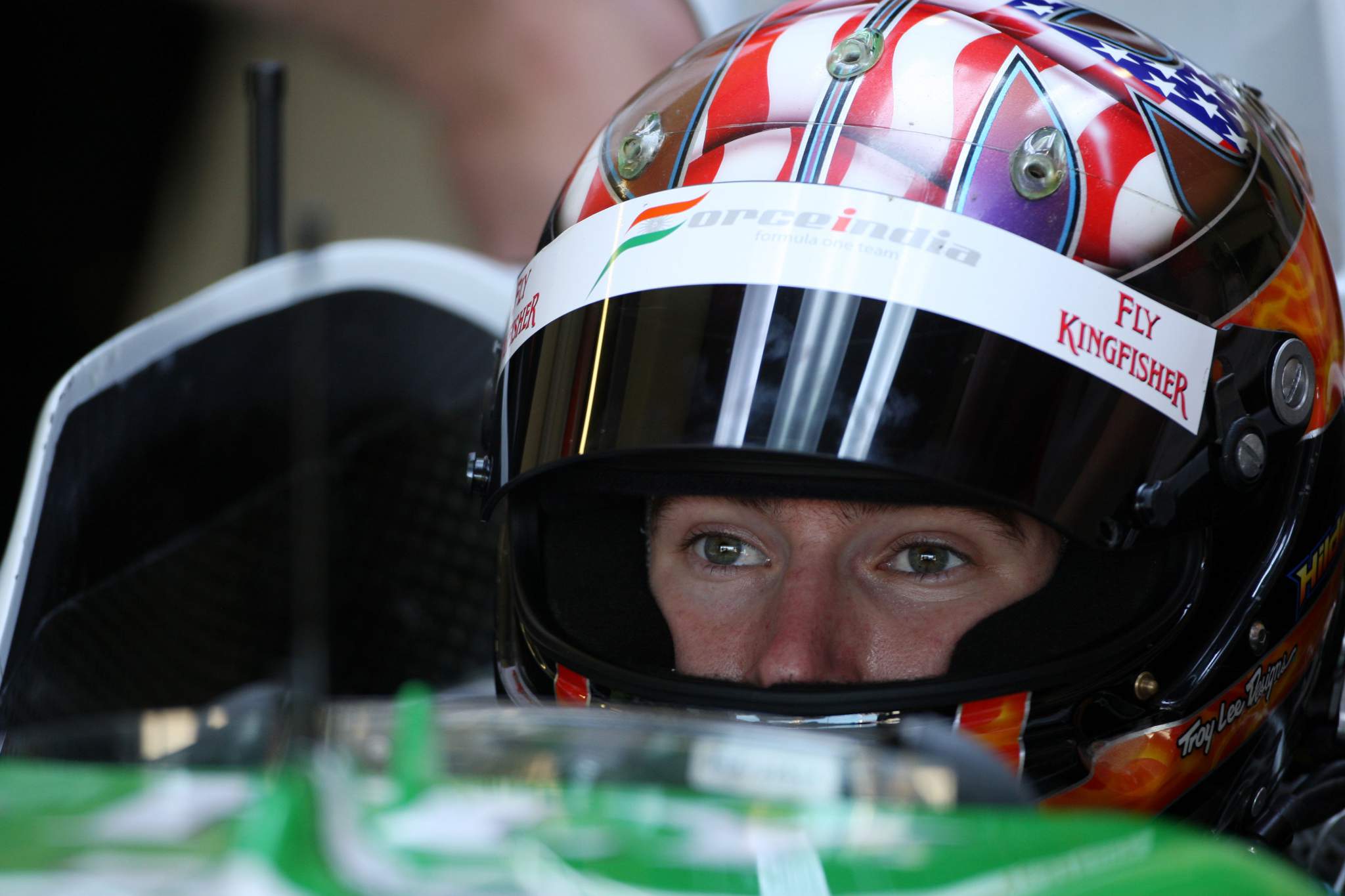
It was only a matter of months before Hildebrand would be in the car at Jerez alongside di Resta, with the standout of the two earning a third driver role for the following season.
The whole thing came at a weird time for Hildebrand who had destroyed the Indy Lights field but had not yet secured an IndyCar drive with things pointing towards sponsorship for 2011 instead.
However, Hildebrand was under no illusions that a strong performance could lead to a top-level future in Europe, so he took the test with Force India extremely seriously even if his inclination was his future was in IndyCar.
The test did not go as planned. Jumping in a car so different without much experience, and up against someone like di Resta who had already been in an F1 car at that point, made making an impression extremely difficult. That’s before taking into account engine trouble and a red flag when he should have set his quickest time on the third day at Jerez.
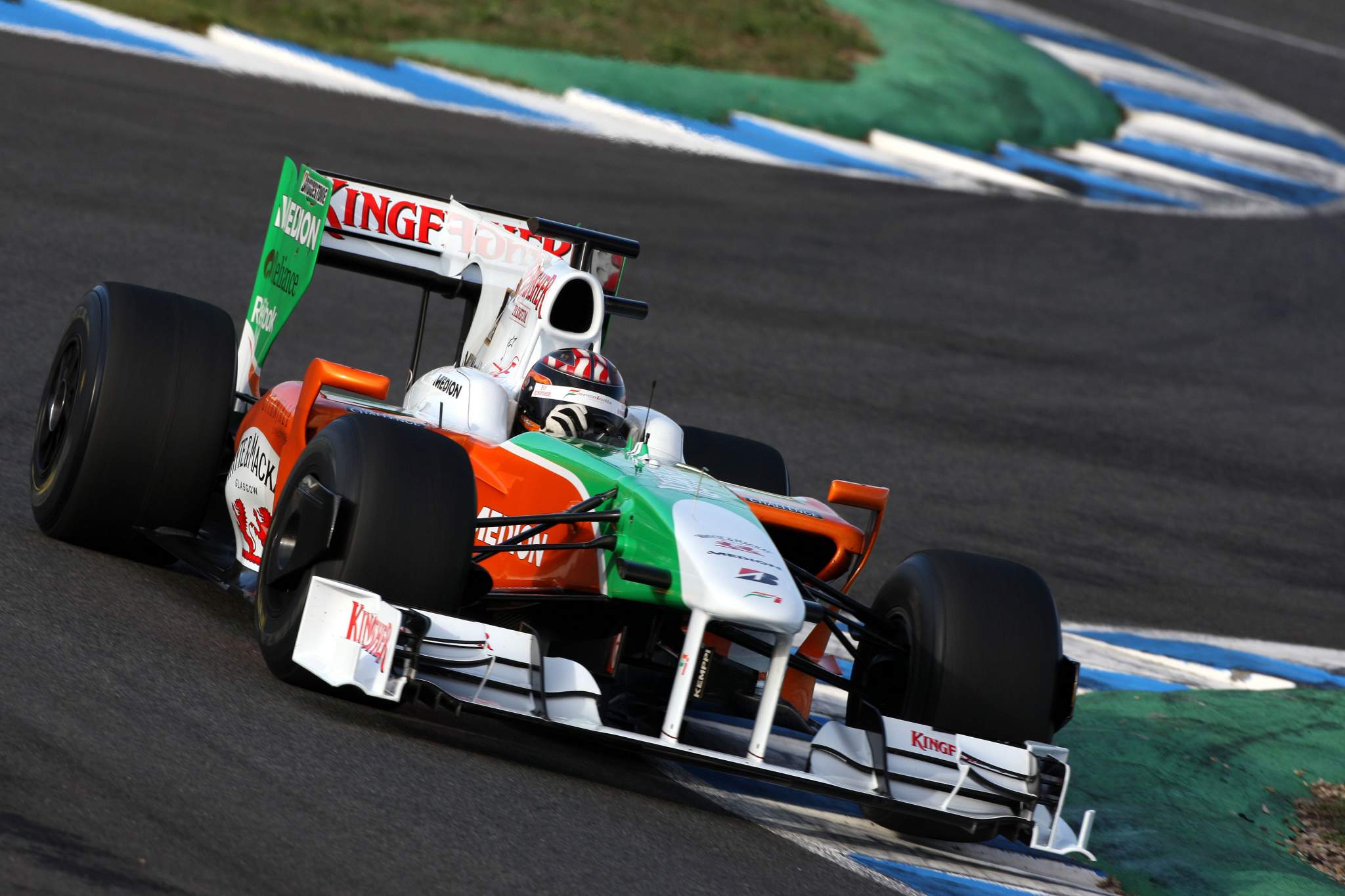
“That was the fastest car I’d driven up until that point,” he says.
“I was a little quicker than Paul was in the high-speed sections of the track, which account for two or three corners or something.
“I went in really thinking as quickly as I can that I’m going to challenge braking, high-speed cornering, all that kind of stuff because coming from the IndyCar world where you’re trying to be flat through Turn 1 at Indy, there’s a part of you that’s built-in, you need to make sure you get some bravery points or something.
“By the end of the first day, my neck was totally fucked!” :: JR Hildebrand
“But the general handling characteristic of the car, I didn’t quite have the time to totally get comfortable with.
“So I was a little bit off just in the more technical sections of the track. I didn’t ask for changes to address it really either, I was just caught up in everything that was going on.
“Paul was a little bit more forward about what he wanted from the car and he’d been in an F1 car already, it was obvious that he was just more comfortable.
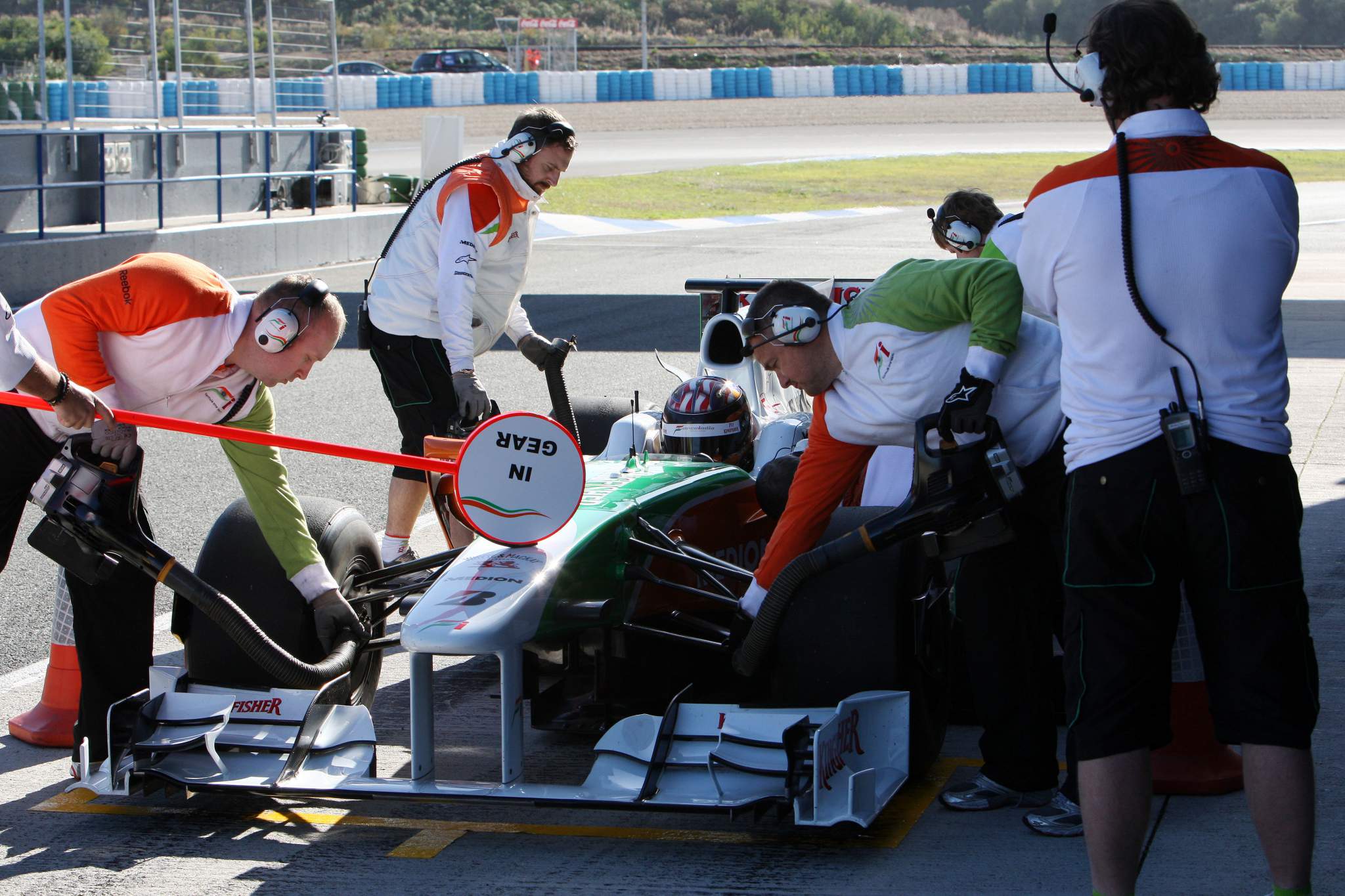
“I definitely recall there being times where it felt like my brain was in warp speed, having to keep track of all this stuff and by the end of the last day everything slowed down to some degree.
“Thinking back to that time, there was a really significant divide between the technology that was in Formula 1 from a driver’s perspective, let alone everything else, and the rest of motorsport. To some degree that’s been reined in and Formula 1 hasn’t changed that drastically and it’s gotten a lot closer everywhere else.”
Gianpiero Lambiase – Max Verstappen’s current race engineer at Red Bull – was the engineer at Force India for the test, and Hildebrand recalls working with him fondly, saying “it’s no surprise to me just after being around for those three days, that he’s where he’s at now”.
In fact, Hildebrand remembers a crew of racers at heart – unspoiled by any sort of entitlement as F1 personnel – and perhaps what they were willing to do to get Hildebrand comfortable in the car reflects that.
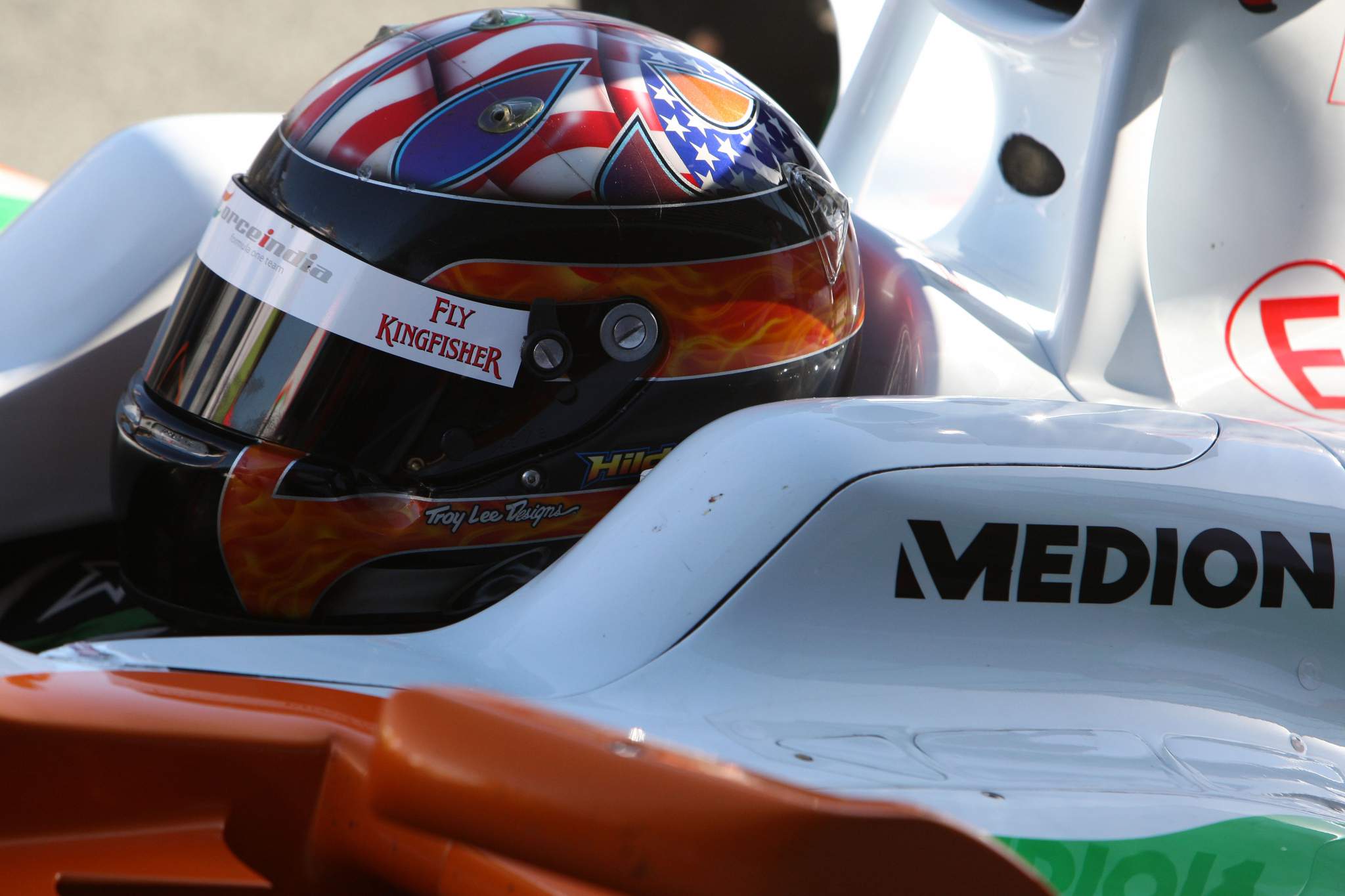
“The one piece of advice that I got from [Scott] Dixon specifically, he said ‘you’re gonna need head pads. Just ask for them, because there’s no possible way to get around it’.
“I couldn’t bring myself to just ask right away. By the end of the first day, my neck was totally fucked! Already at that point I didn’t fit in the car either, which was weird.
“I guess it makes sense because, you saw this with George Russell last year in the Mercedes in Bahrain, that the cars are sort of designed for the guys they have in it.
“But Adrian [Sutil, Force India’s race driver at the time, below] was a big guy, I was his size.

“I think I ended up having to steal his shoes because my shoe was rubbing on something.
“So there’s some dude literally sanding away at the heel of the racing boot, to try and get it a little flatter in the car.
“It was a funny experience, to have so much technology and it felt very futuristic, but then, in parallel, you’ve got all of these things that are just regular racing stuff that you’re dealing with, whether you’re in an F1 car or you’re racing go-karts.”
Hildebrand set the 10th fastest time on the final day, a second off di Resta but with sectors that just didn’t come together for a representative time. When you consider the adversity he was facing, it was a valiant effort in a test topped by the reigning British Formula 3 champion Daniel Ricciardo for Red Bull, with di Resta second ahead of McLaren’s Gary Paffett.
Even Marcus Ericsson (pictured below) – driving the title-winning Brawn that day – only went three-tenths quicker than Hildebrand, and he went on to have a 97-race Formula 1 career.
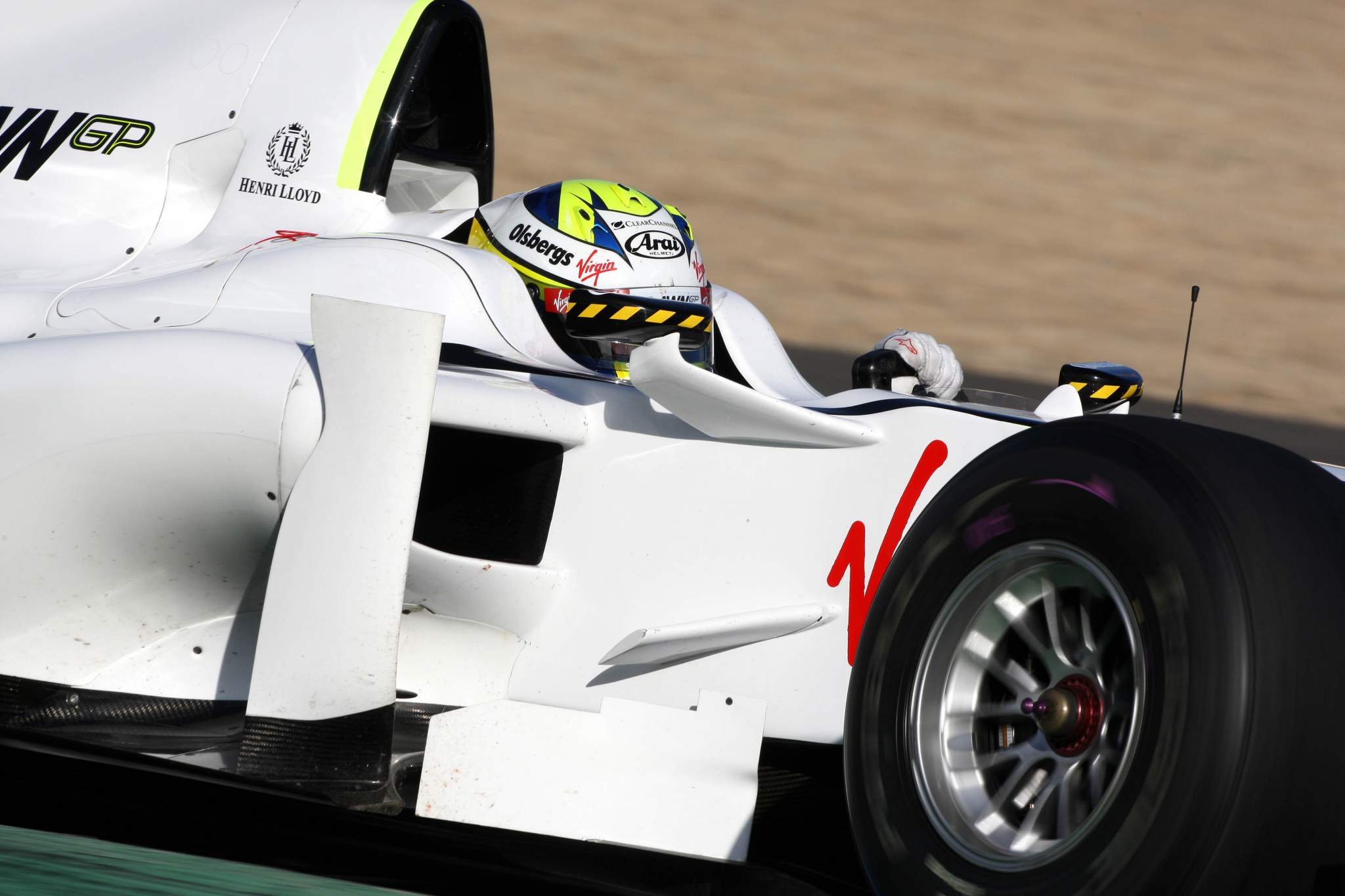
Hildebrand adds: “At that point then, it was a weird mix of wrong place, wrong time on the track in terms of red flags.
“I didn’t ever post a lap time that I think was representative of how close I was through a fair majority of the track compared to Paul who showed quite well during that test.
“He 100% deserved to become the third driver, he was prepared, he was ready to go. There was no question I don’t think, even if you looked at the data and saw the discrepancies in terms of what the time I posted was versus what I was capable of doing.”
Despite that disappointment, Hildebrand had approached the test feeling like he had nothing to lose and that proved to be the case as the struggles – even if they went without caveat – didn’t hurt his stock Stateside.
The test led to potential new opportunities, ones that Hildebrand hadn’t thought were possible. Many may not know that Hildebrand had entered into talks to do GP2 [now Formula 2] after the F1 test.
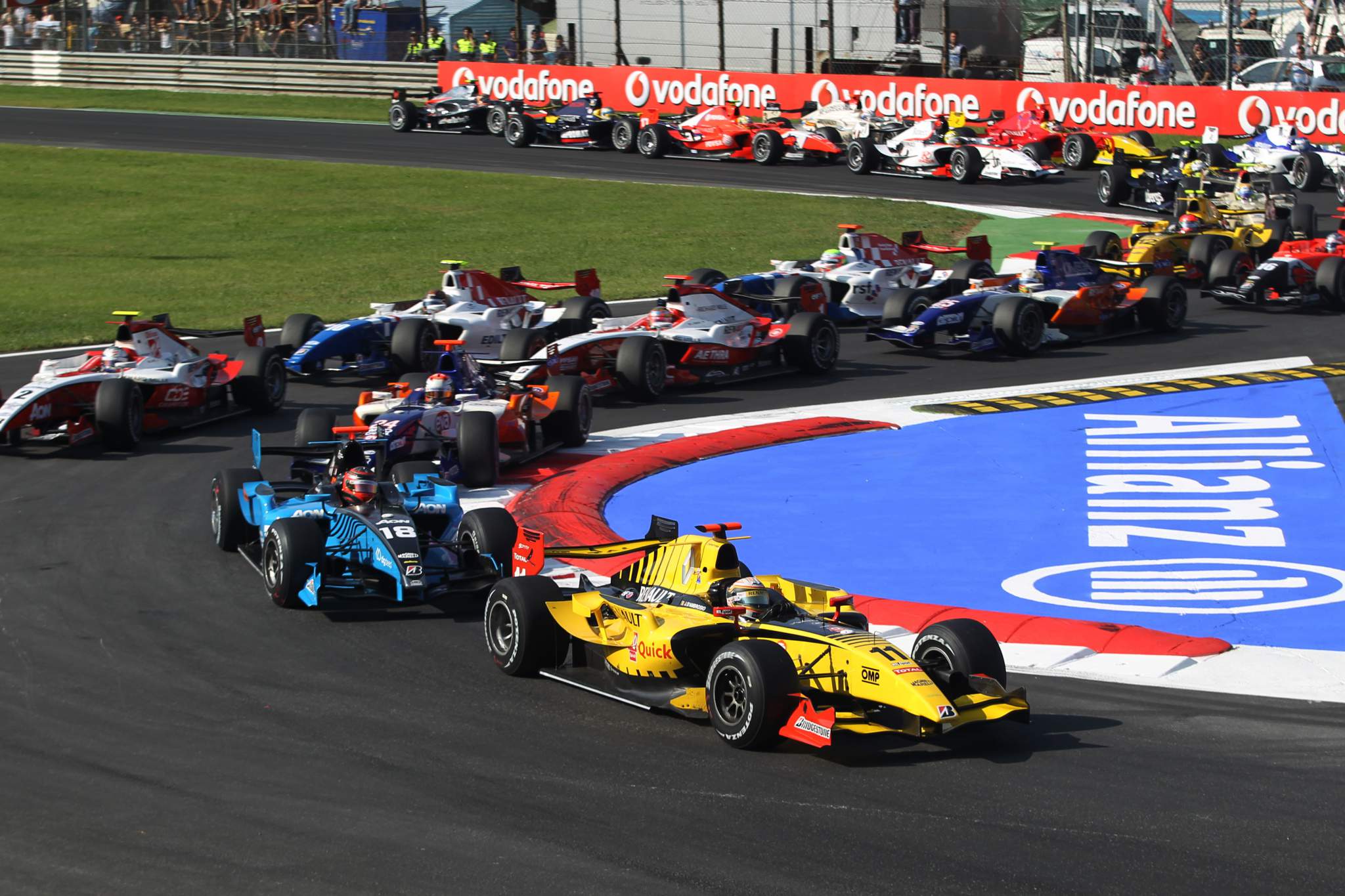
“There were discussions which I flew back over to Europe a couple of times for about doing GP2,” he adds.
“Vijay was prepared to fund that to a reasonable extent for me to go over to Europe and just get used to everything, to learn the tracks and learn the tyre and get a better feel for all that stuff, and so I pursued that seriously for a couple of months.
“The thing that really made that difficult was, that possibility wasn’t even a conversation until the middle of November. And so the consensus that we all came to more or less was that the options weren’t there, without the promise of it being a multi-year commitment and at that time the good seats in GP2 for the top three or four teams were already filled for 2010.
“GP2 at that time, it was one practice session straight into qualifying and the tyres were super sensitive, and you had to be able to bang it out on the first or second lap. It was gonna be a pretty serious ask not being familiar with any of the rest of it, in that competitive environment at that level.
“We all know the kinds of guys who were racing GP2 at that time. A lot of them have gone on to become F1 drivers.”
It clearly didn’t affect things for Hildebrand too much as it became clear he’d bagged a Panther Racing seat in IndyCar for 2011 with National Guard backing which would ensure he’d earn a wage.
It was a job that “made as much sense as anything” to take on, especially when the GP2 deal wasn’t quite right.
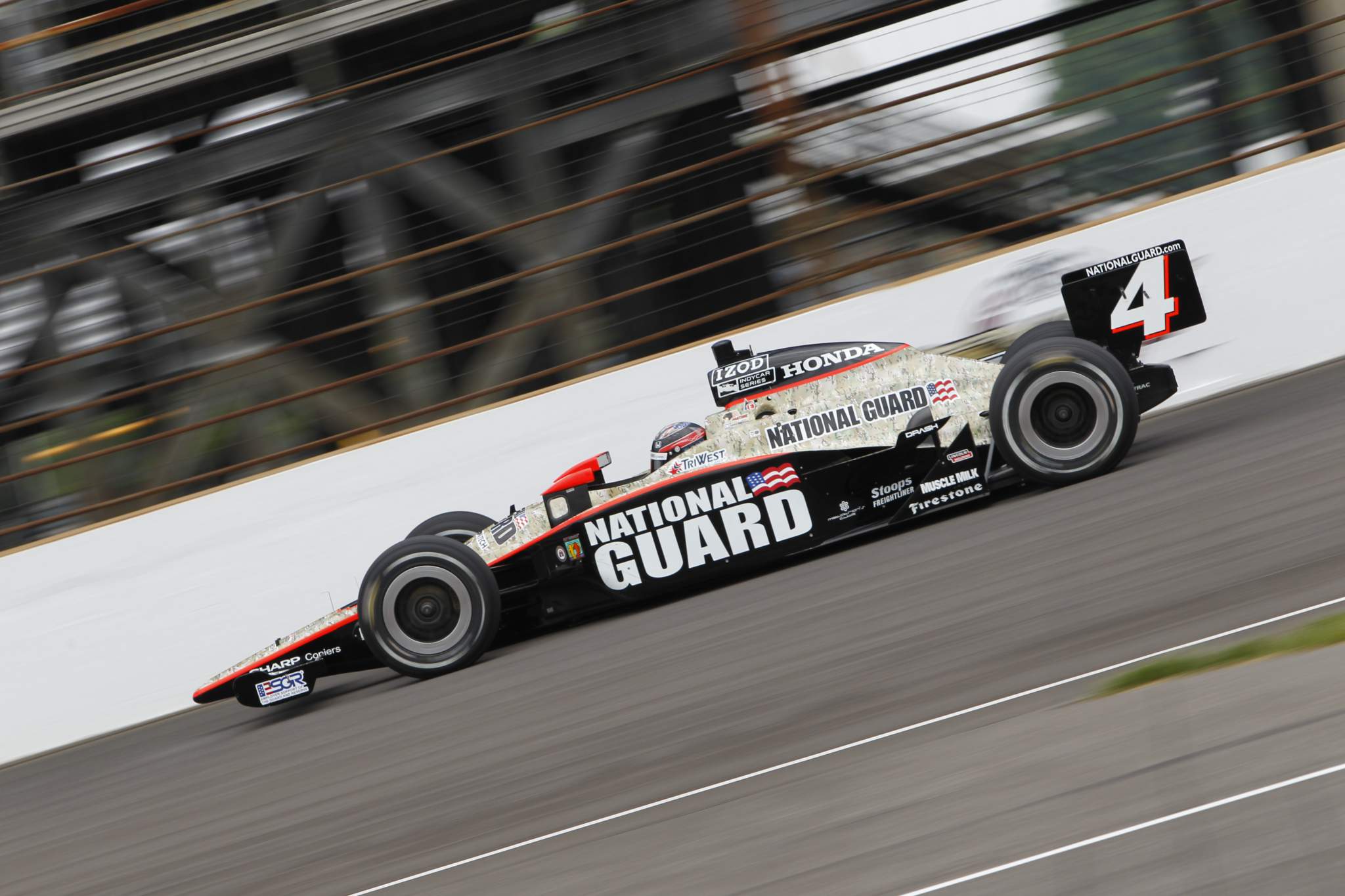
But still, to be one of those lucky few to have driven a Formula 1 car, especially one of the last of the era where the cars were smaller, high downforce and naturally aspirated, is incredible.
Much has been made of drivers like Josef Newgarden, Colton Herta and Patricio O’Ward not getting at least an F1 testing chance, so to think now of Hildebrand as an Indy Lights champion of the time getting an outing feels…bizarre.
“It’s worth pointing out that, if I hadn’t been – in their mind – the second-best guy in the sim, then I don’t think I would have gotten the Force India test, so there was a bit of a vetting process,” he says.
“It didn’t seem bizarre to me at all at the time and frankly when you looked at a lot of the drivers that were getting those young driver tests or getting sim days, it wasn’t bizarre.
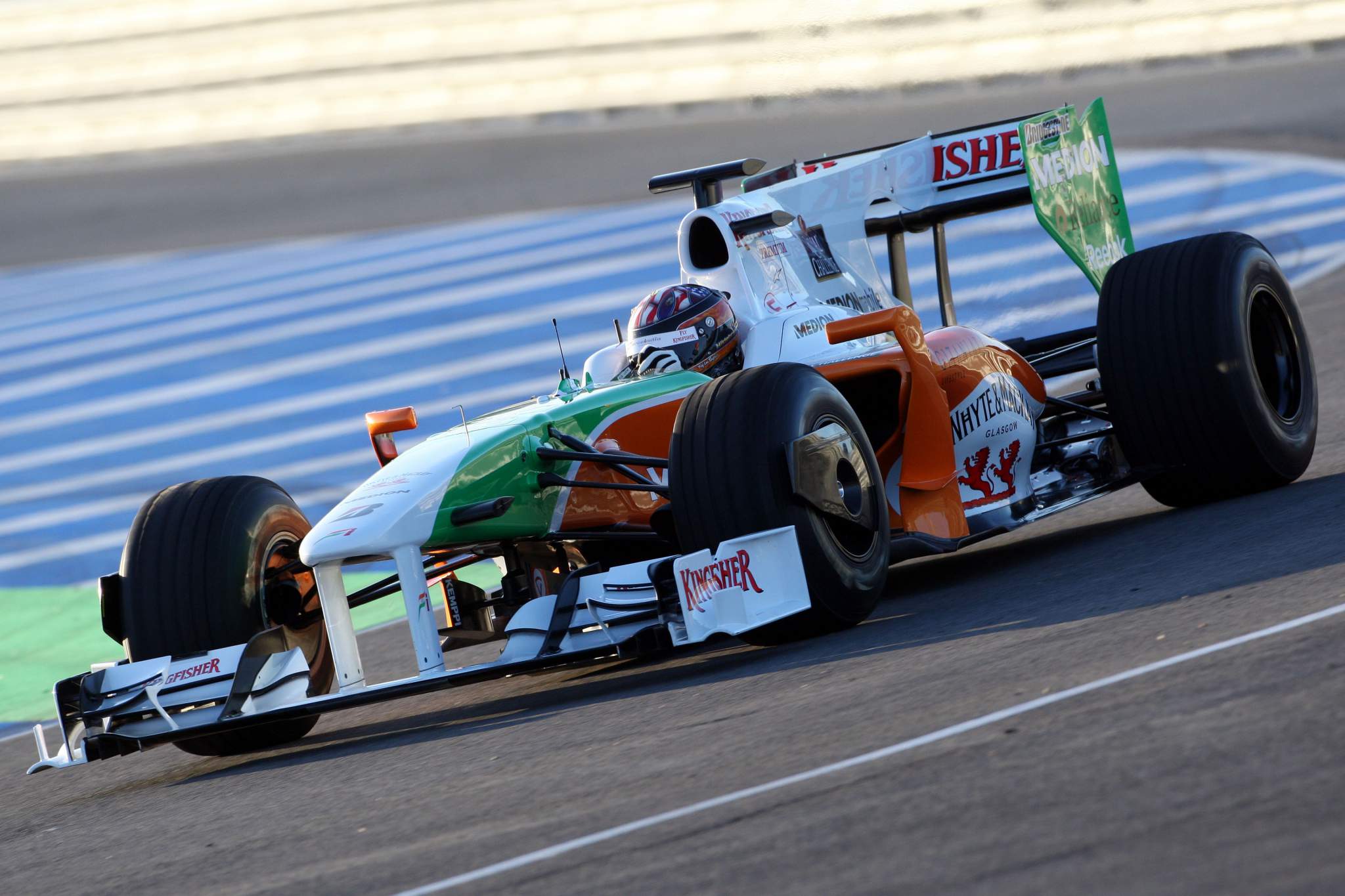
“To actually get the test, without it being because I was coming up through Europe or because I had a sponsor, it didn’t seem crazy to me and I don’t know that it seemed completely insane to anybody else at the time, but it has turned out to be something that has been quite rare since then.”
The erosion of importance in handing chances to an array of drivers in post-season F1 tests is partly to blame, and it’s to the general motorsport population’s detriment that IndyCar drivers like Newgarden haven’t been given a shot.
But for now, we can revel in Hildebrand’s boot-cutting, neck destroying, sim conquering four days of being an F1 driver.


